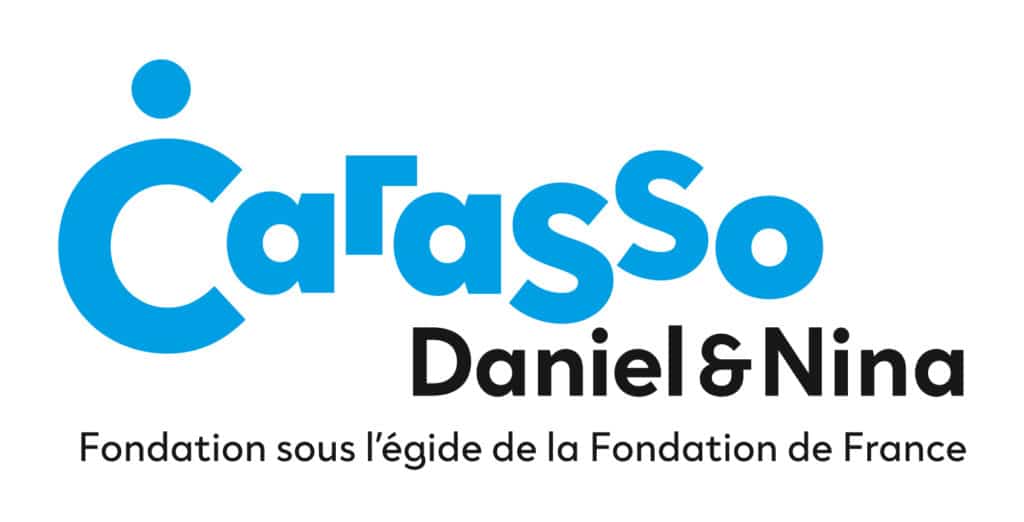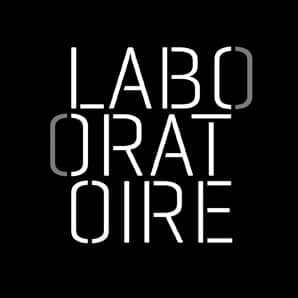Dec 14, 2024 | local contemporain en
Maryvonne Arnaud, Alain Quercia and Philippe Mouillon will be in research and creation residency at the invitation of Jun Yano President of the ZUTTOSOKO Art Center, located in the province of Fukoshima in order to Question and represent soils.
Most European languages retain in their structures the imprint of words of Latin origin, as many clues to ancient interpretations of the world. If these interpretations have been preserved in Western grammars over the centuries, it is obviously because they always remain active, bringing us a useful consistency to our daily perceptions and representations. This is the case for example of the word Humus, which designates the surface layer of the soil, resulting from the decomposition of organic matter, by the combined action of invertebrate animals, bacteria, fungi and by the alternation of climatic cycles. Humus designates living, fertile soils. Now the etymology of this word is common with the words Humanity, Human, Humility, which symbolically means that the soil constitutes our nourishing soil, but that it also forms the matrix of humanity, our common fund without which we cannot deploy our lives, socialize and humanize ourselves.
But this maintenance of the soils and this careful transmission from one generation to the next seems broken today. The shameless exploitation of soils and their widespread mistreatment, obviously reaches a peak in Fukushima, but it is emblematic of a suicidal, amnesiac or distracted global system, which causes the collapse of the ecosystem balances necessary for the preservation of humanity and threatens the habitability of the terrestrial. Living lands become rarer and more precious every day.
Questioning and representing soils will be our common method of approach to question and reframe our lives, to situate them in their right measure in the long time of humanization and in the tangled dynamics of the living. But our approaches will be divergent and will play at surprising each other, complementing or intertwining each other.
May 5, 2022 | local contemporain en, RECHERCHE / PUBLICATIONS
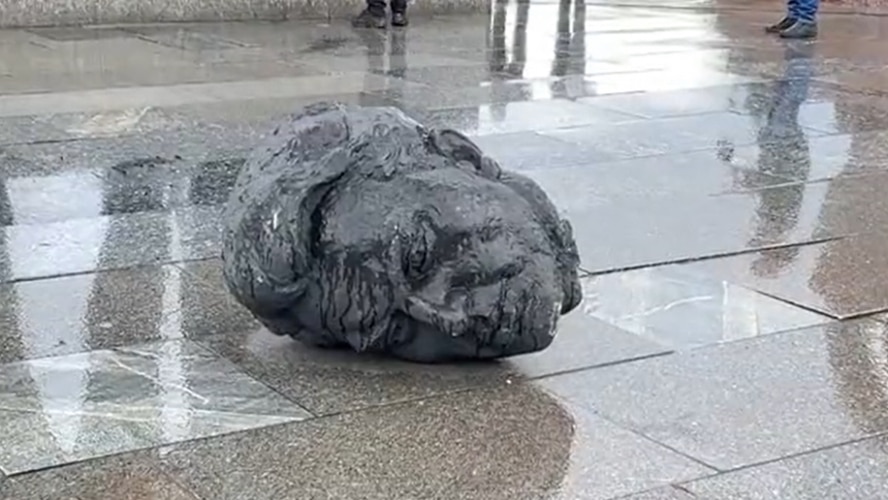
While the Ukrainian resistance overthrows in kyiv the statue dedicated to the friendship between the Russian and Ukrainian peoples, Romanian artists and intellectuals are wondering how to radically renew the artistic presence in the public space of Bucharest.
Here as elsewhere, the steamroller of the market imaginary dominates the public space, but the city is a complex palimpsest composed by Byzantine then Orthodox imaginaries, Austro-Hungarian then Soviet occupations, the frequency of earthquakes, the state of abandonment of buildings whose owners disappeared during the disasters of the 20th century, and today by the unbridled Eldorado of the globalized economy.
In this context, what legitimacy to rely on? How to take in charge without waiting? How to regenerate public space by opening it up to cross-cutting initiatives? How to share the differences of interpretation of the world? How to contribute to the autonomy of individuals? How to revive? How to welcome dissident thoughts, poetics, social innovations?
The initiative led by Edmond Niculusca (ARCEN) and supported by the French Institute of Bucharest brings together artists Pisica Patrata, Dan Perjovschi, Cristian Neagoe, architect-urban planner Monica Sebestyen and former Minister of Culture Corina Suteu, expert international in innovative cultural policies.
Mar 29, 2022 | local contemporain en
- multitudes – philosophical artistic political review, publishes this spring 2022 its number 86 entitled The territory, a political affair
-
Territory! The word flaps like a flag, it is adored or suspected. What about this political object? This issue attempts to objectify it, to extract it from categorisations to show its diversity, its interdependencies, its historical depth, its resources. “The spirit of the place” inspires the artist, defines the environments to be preserved, permeates our affects. We all experience “the appalling sweetness of belonging”.
- In response to this invitation, Philippe Mouillon develops in this issue the idea that the work of the place is simply the work of a smuggler who facilitates resurgences of time and their social acclimatization:
“The poet, the artist, the gardener or the architect (and so many others, inhabited by deep times) can work on a place by carefully assembling a certain quality of air, lights, prevailing winds, by dosing the mineralities, by synchronizing the encounter between individuals, an era, temporalities and the entanglement of terrestrial ecosystems… in order to crystallize a mood, an impalpable atmosphere, a particular intensity that carries us and invites us to live.
From one site to another, but also from one era to another of human societies, from one stage to another of our own existence, places form the matrix of our sensitivity and our behavior. They are places rather than nothing in that they soothe us, console us, consolidate us, bring us together, connect us, grow us. They are part of a break with the simplified uniform of territorial abstraction to open in us a decanted present of the moment, where presences and absences remain, endlessly intertwined”.
Feb 22, 2021 | editions en, local contemporain en
We sometimes feel out of place, without however managing to identify what disorients us in what stands before us, irreducible to our previous experiences. New emotions take shape, still wavering, fragmentary, equivocal, which can slowly gain consistency and clarity. This quest for a change of scenery has long been a rare aesthetic experience, a meditative or initiatory search.
But for twelve months, we have lived out of place while remaining on the spot. As if the ground under our feet had lost its usual consistency. Our living environment seems out of tune with its foundations, with our most common uses and with the complicities accumulated over time.
Faced with this alert, it seemed useful to us to invite iconoclastic and playful visions to the rescue during the cycle of artistic and intellectual performances Ça Remue! end of October last.
Our accomplices are bird whistlers, gardeners, architects, anthropologists, shepherdesses, performers, philosophers, physicists, ecologists, echo, dawn or cloud catchers, poets and landscape designers…. They challenge our habitual perceptions of SOIL, BODIES, ATMOSPHERE to bring out more appropriate uses of the world.
Local-contemporain publishes this sum of rare intuitions under the title Dépaysements. We are happy to share a preview with you of these few excerpts:
EXCERPT FROM THE SUMMARY :
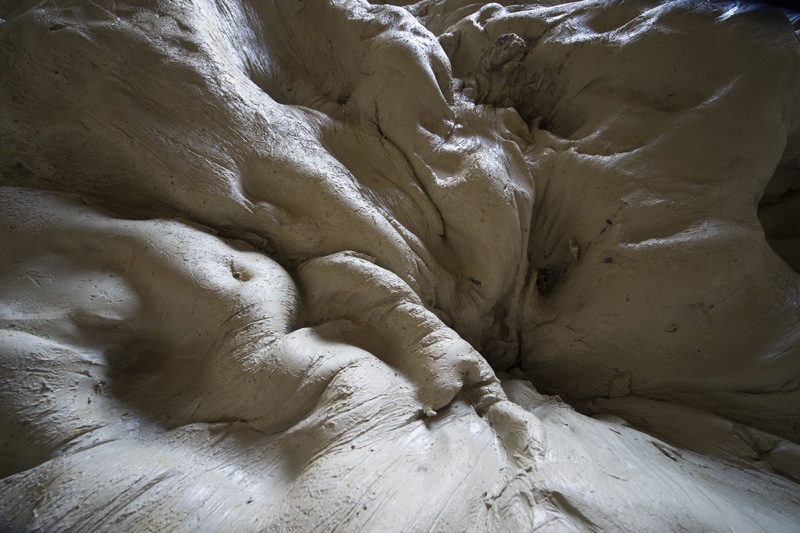
Alexandra Engelfriet : HAND TO HAND
Below the dominant layer of thought opens up, layer after layer, a continent which cannot be expressed in words, but only experienced. By penetrating these deep layers, a marvelous phenomenon occurs which, deep inside me, opens me to the world, to a more complete reality. Clay is this primordial reality, prior to language.
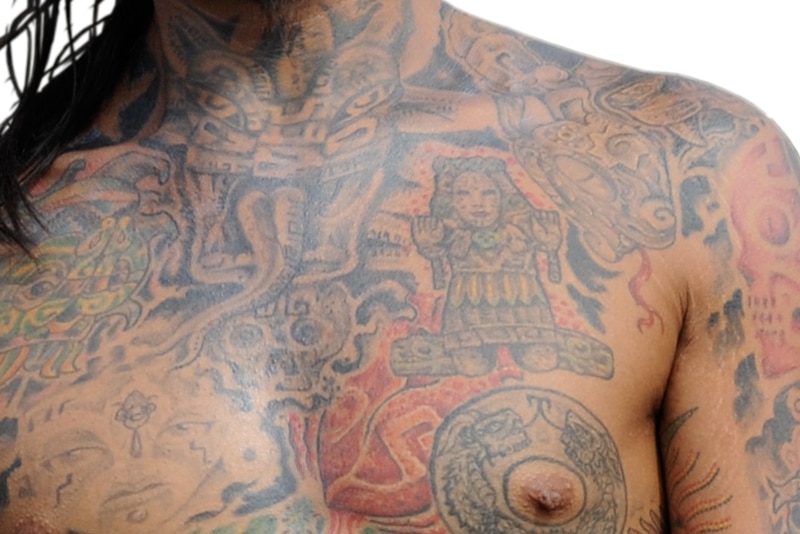
Johnny Rasse : BECOME INVISIBLE
Entering into conversation with a bird requires making oneself totally available and shapeable since my body, my voice and my resonators will have to redesign themselves to accommodate this song. But it does provide a deep sense of wholeness and oneness with my surroundings. I think I have sought throughout my life, and especially during my childhood, the intoxication of this moment.
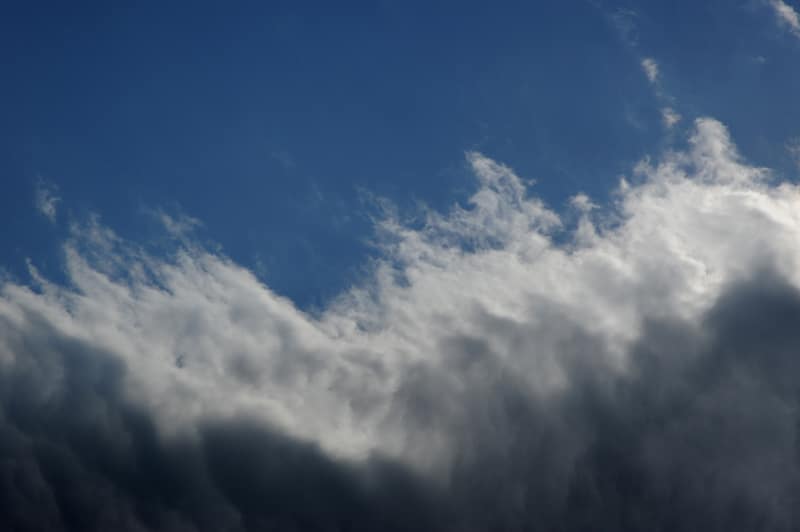
Catherine Grout : BREATHE WITH EARTH AND SKY
If we characterize ourselves as homo sapiens by our verticalization, we do not stand quietly. We are in relation with everything that surrounds us in this gravitational and anti-gravity earth-sky connection with an exchange of forces and energies. Our relationship on the horizon is also not tranquil. Nor to the clouds for that matter.
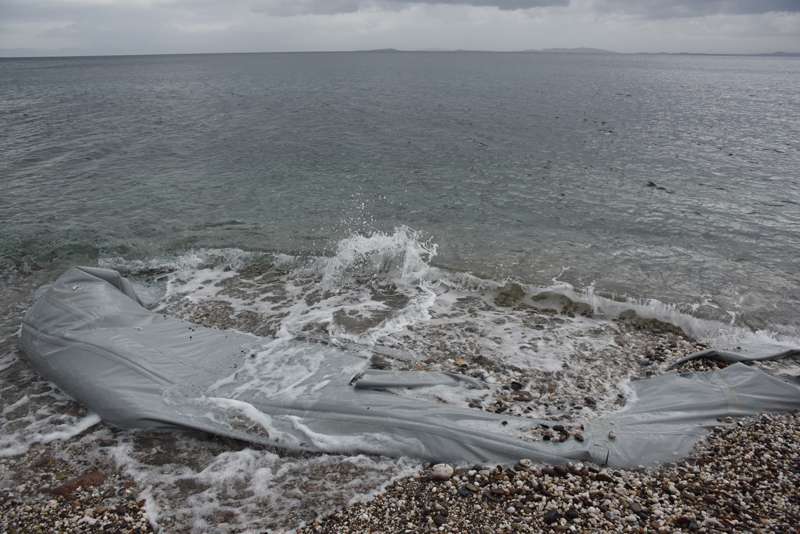
Maryvonne Arnaud : THE NATIVE LANDSCAPE
Will we ever be able to relive landscapes? Will we be able to survive from landscapes? Will the gestures of welcome, the hospitable voices, the smells, the sweetness of the sun, wake up the landscape? Will the gaze of children born here or there, without soil, born between, born nowhere, revive the taste for landscape? These children who do not know the landscaping, will they become smugglers of landscapes?
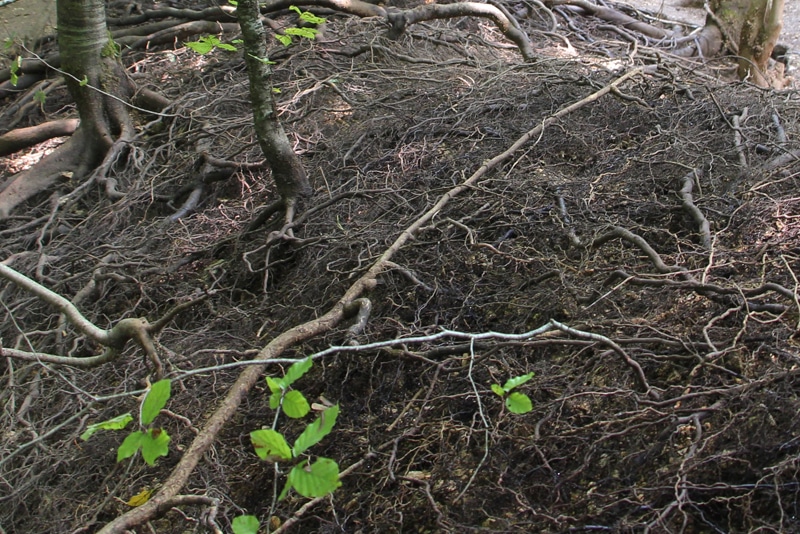
Gilles Clément : AN INVERSION OF LANDSCAPES
To reproach a plant or an animal for being there when it comes from elsewhere is to understand nothing of the behavioral reality of the living. We are subject to a compartmentalized cultural model, with a totally blocked fixist vision, where there is no way out. This reflects a misunderstanding of the ordinary mechanisms of life and evolution.
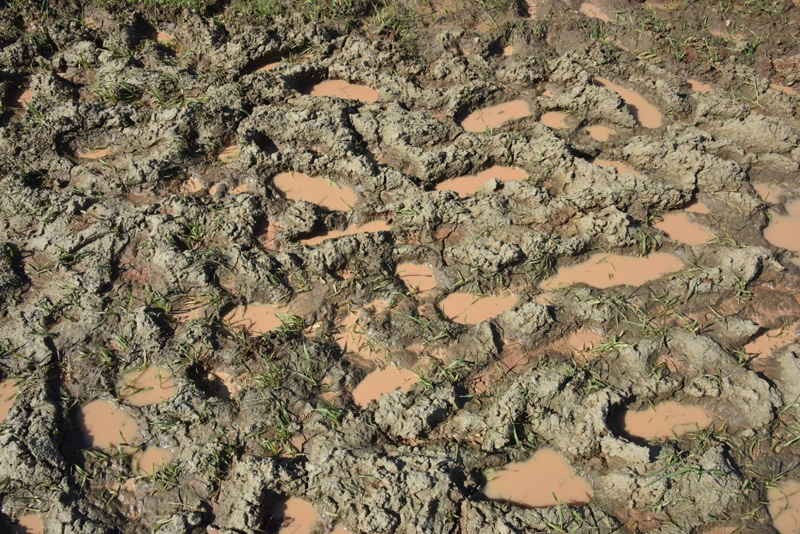
Daniel Bougnoux : DECOINCIDATE
Our lives are played with dice: de-landscape, de-centering, de-localization, departures… We are beings of desire and this desire tears us apart, dislocates us, exiles us from any landscape or country.
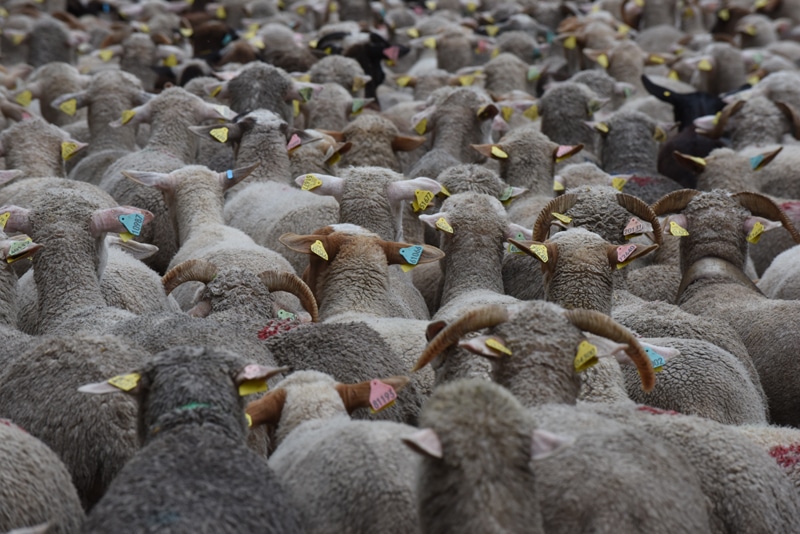
Bruno Caraguel : LA REMUE
We will not redo the cities, but we can make them permeable to the living. It is the choice of a wonder that is neither nostalgic nor backward-looking, but forward-looking and innovative.
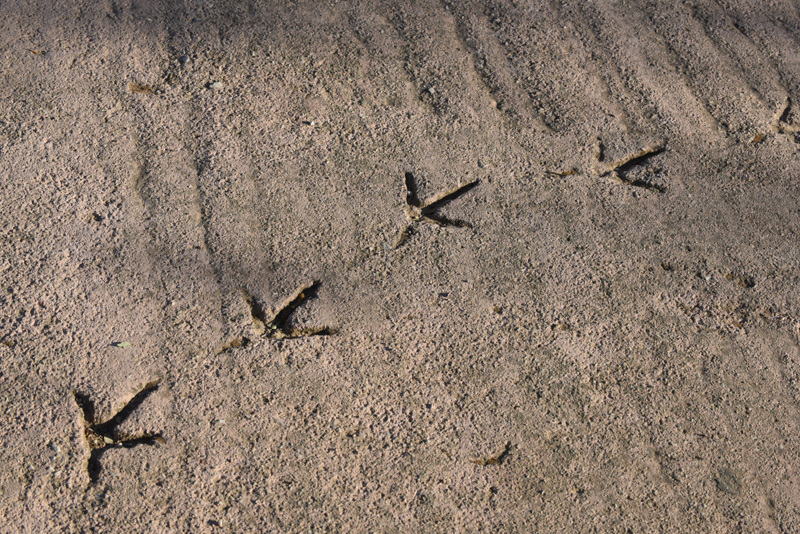
Pierre Janin / Thomas Mouillon : OBSERVING THE SOILS UNDER OUR FEET
Anchoring and nomadism, rural and urban, local and territorial, intellectuals and manuals, we are part of the agricultural time of the summer pastures, the time of transhumance which remains a formidable model.

Anaïs Tondeur : MISLEADING TRANSPARENCY
The Cloud Parliament transforms the exhibition hall into a courtroom. A silent courtroom, as if awaiting a verdict, where it is the clouds that seem to have become the witnesses for the prosecution, where these transparent entities are recognized for their place at the heart of the balance of the world, guaranteeing the maintenance of the breathing of the bodies.
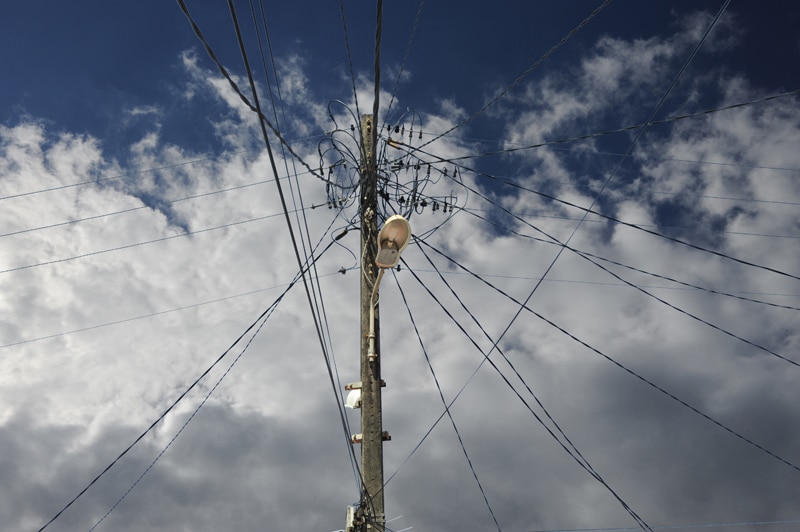
Henry Torgue: THE GREAT LISTENING OF THE WORLD
The sound bath that immerses our lives cannot be reduced to an acoustic dressing applied to the visual landscape. From the womb of our mother, hearing is one of our active senses to apprehend the world.
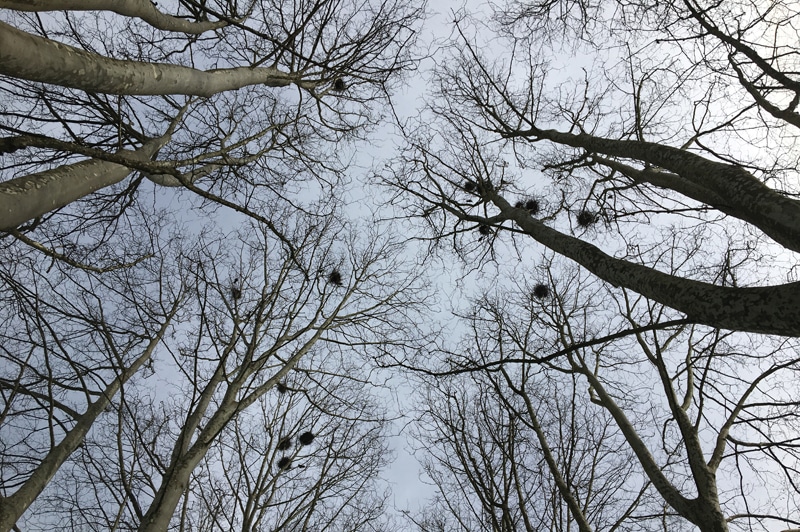
Jean-Christophe Bailly : BRIEF BACK ON A TITLE
As soon as we leave the circle of our daily movements, we prepare ourselves to be disoriented, projected into another space and other spacings, in the position of the apprentice that in fact we should never abandon.
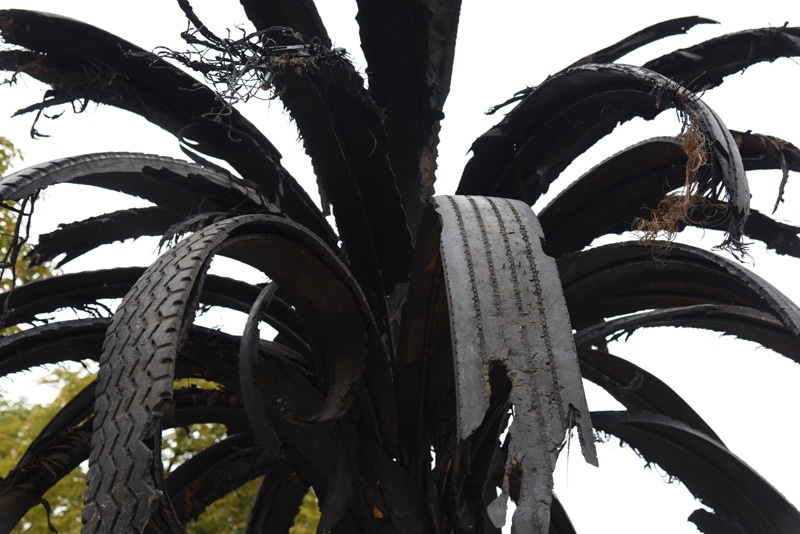
Marc Higgins : THE TRAVEL MEMORIES OF DOUGLAS WHITE
The Black Palms of Douglas White are at the crossroads of two twin logics of intensive and blind exploitation of the world. They invite us to lie down in the shadow of the globalization of tourism and the domination of our imaginations. They contain no hope.
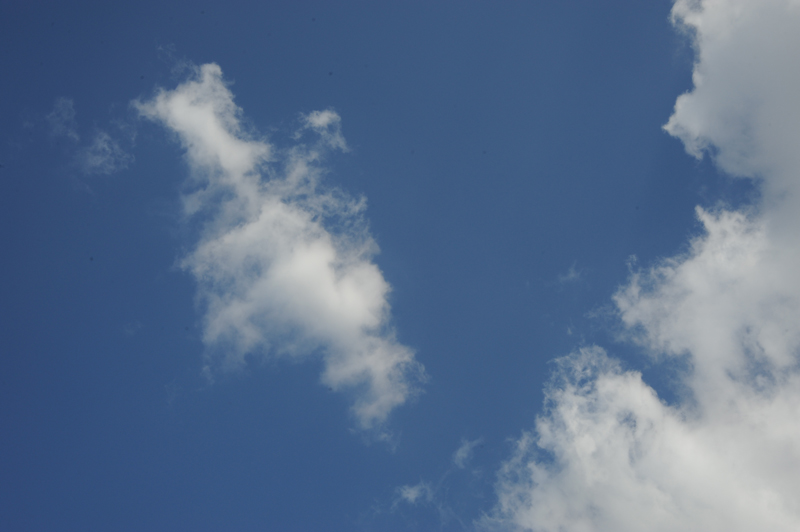
Marie Chéné : TOUT AJOUT JOUE
The echo returns to us, totally or in part, what we sent it, and it is as if it gave it back to us brand new, as if it made us truly hear it. We offer him a small germ of language and, with a backhand blow, he gives you the complete sentence.
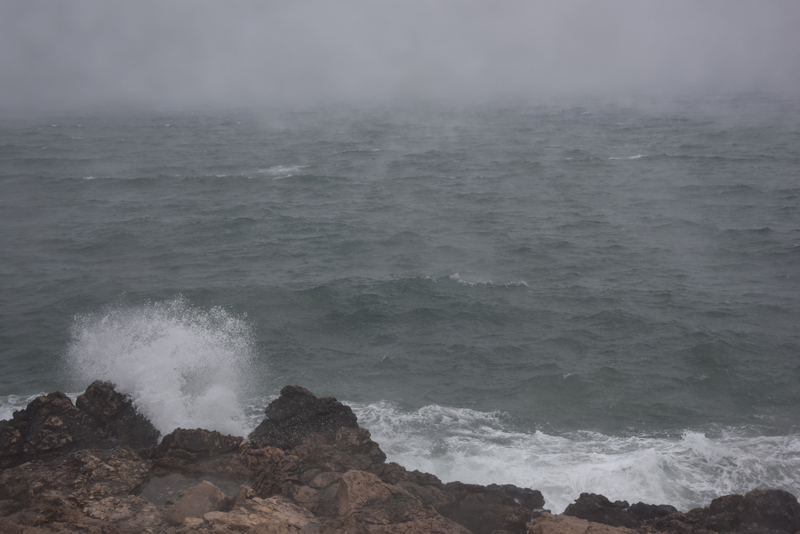
Anne-Laure Amilhat-Szary : DIE OF LANDSCAPE
It is no longer possible to contemplate coastal lights without thinking of the migratory dramas that cross these same landscapes.
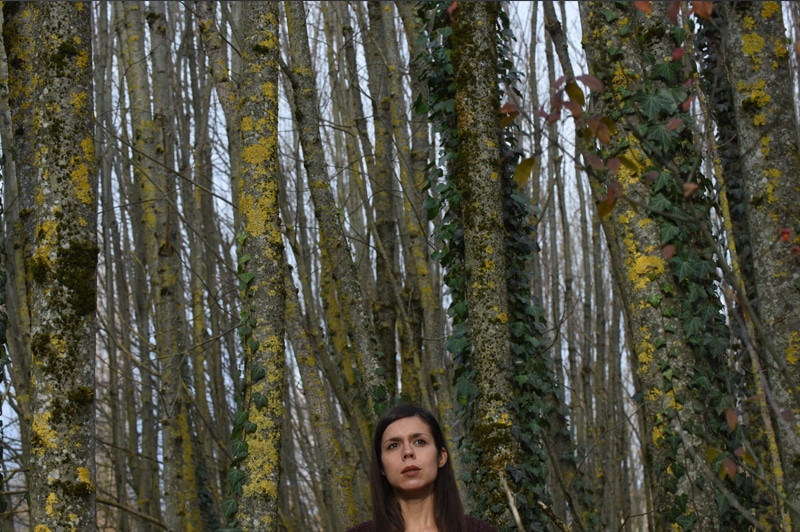
Marie-Pascale Dubé : THIS IMMENSITY FELT…
The more I sing, the more I feel like I’m coming back to something that’s already there and that surprises me, that opens up and awakens emotions already present in me. An impulse of joy and suffering. It’s about healing. I am neither a shaman nor a healer, but I feel that within me, singing heals me.
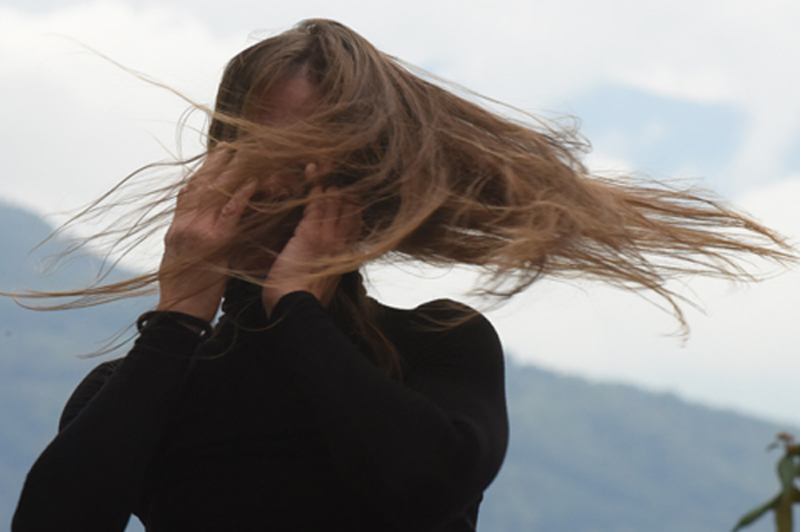
Lora Juodkaite, Rachid Ouramdane : NEXT TO REAL
For me, gyration remains a very simple daily practice. My consciousness surrenders, I bow, and I’m grateful. Maybe that’s why this movement stays with me.
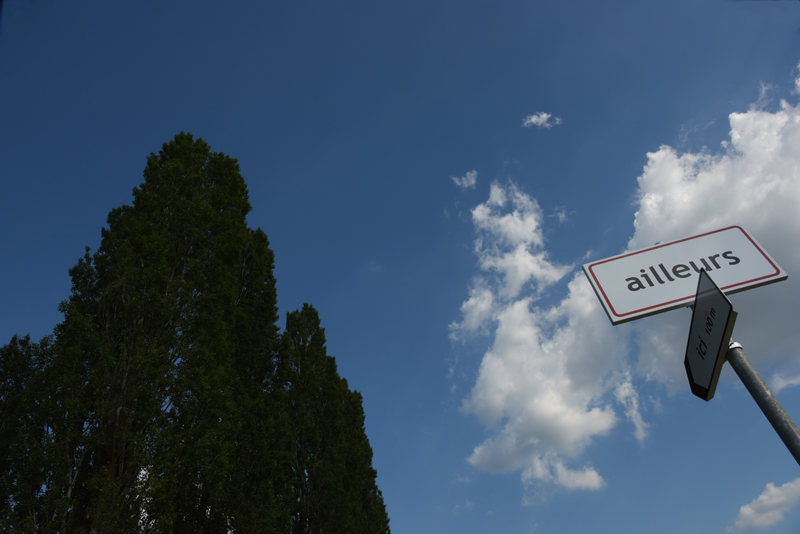
Jean-Pierre Brazs : THE WORLD IS IN DELICATE USE
Nothing can really exist without being said, the words of the landscape have a place to take, including in the landscape itself.
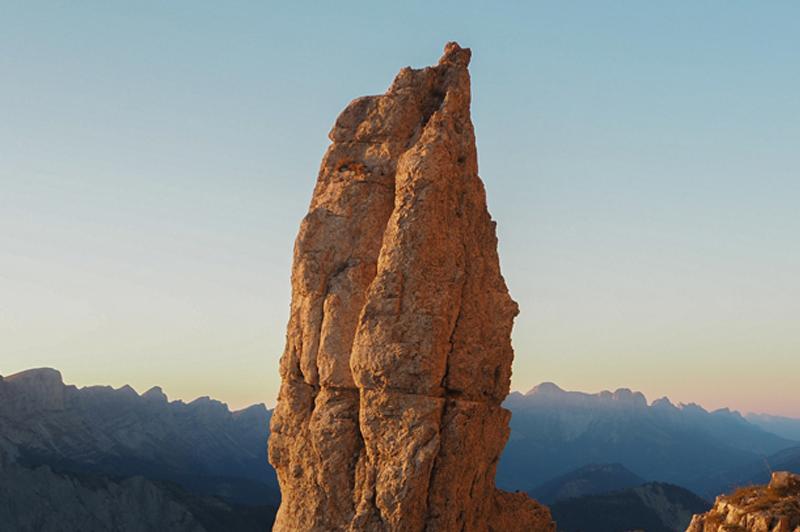
Hervé Frumy : A NIGHT ON THE INACCESSIBLE
A bivouac on Mont Aiguille, defeated on June 26, 1492 by royal will. Accompanied by several trades, Antoine De Ville will stay there for a week, the time to say a mass and lay three crosses.
Ça Remue ! (It stirs!) is a LABORATOIRE initiative carried out with the support of Idex Univ. Grenoble Alpes, the Department of Isère within the framework of paysage>paysages and the Carasso Foundation under the aegis of the Fondation de France.
Oct 29, 2019 | editions en, local contemporain en
As we witness the collapse of animal populations, it seems urgent and necessary to highlight the animal part of humanity.
The humanization of the world has prospered by enslaving other species, to the point of forgetting the animal roots of our sensations and our emotions, the distant complicity shown by the paintings of the Lascaux or Chauvet caves. Wild or domesticated, animals have broadened our awareness and perceptions, and it would be a terrible regression to accept a shared world between the industrialization of “useful” animals and a generalized ecosystem desert.
So that humanity does not escape from human beings, we must recomposed human societies in order to facilitate the movement, the stay and the blossoming of animality, that is to say, to assemble entanglements of rhythms and trajectories. who do not just bend to human interests and projects. Because animals participate in the balance of our societies by their work, their affection, the irreducibility of their behavior.
By combining the knowledge and sensibilities of shepherds, artists, breeders, philosophers, anthropologists, ethologists, geographers …, landscape-animal draws the contours of a more intense and balanced relationship between living beings sharing the same land.
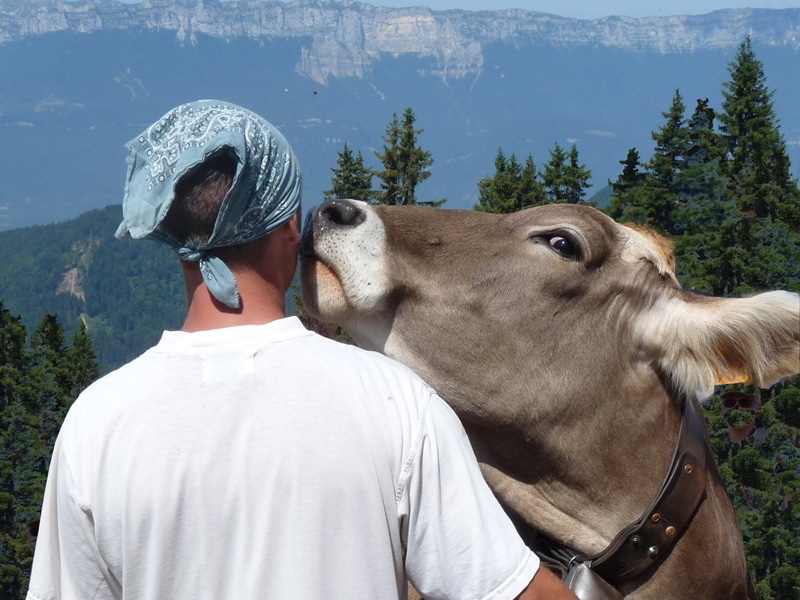
Dialogue avec un troupeau / Laurent Four dans le cadre de
Ça Remue !
Summary :
User manual Alain Faure
Animal landscape Philippe Mouillon
Humus humanity Daniel Bougnoux
Didactics of affective tuning for collapse time Yves Citton
Enchanted by the flock Inge Linder-Gaillard
A flock on campus, what for? Bruno Caranguel
To graze the fields of knowledge Guillaume Lebaudy
Animals at work Jean Estebanez
The integrated university, a pastoral symphony Jean-Charles Froment
Flank the landscape Olivier de Sepibus
A world of insects Laurence Després
Transmitting emotions Katia Després and Gael Sauzeat
Gonepteryx Rhamni Caroline Duchatelet
Attempts to approach a suspension point Yoann Bourgeois
Spider’s mood Conversation with Abraham Poincheval
The textures of the time Jordi Galí
Places for the living Conversations with Victoria Klotz
Water Memory Conversation with Cyrille André
Animism and wilderness Nastassja Martin
Humanimals landscapes Coralie Mounet
Between dogs and wolves Conversation with Antoine le Menestrel
Migratory Antoine Choplin
The living, the sounds and the territory Henry Torgue
Animal conditions Maryvonne Arnaud
For a city where the walls chirp and sing Milena Stefanova
Atlas of the worlds of each Philippe Mouillon
Lost white pigeon Conversation with Alban de Chateauvieux
Anime Conversation with Alexandra Arènes
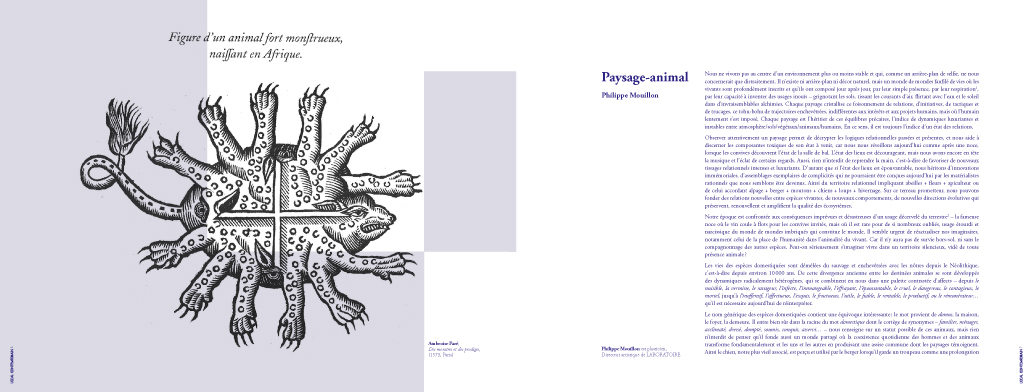
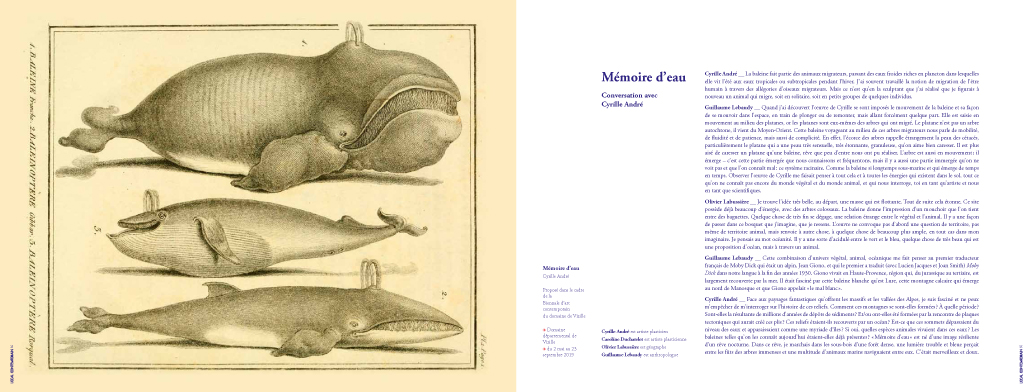
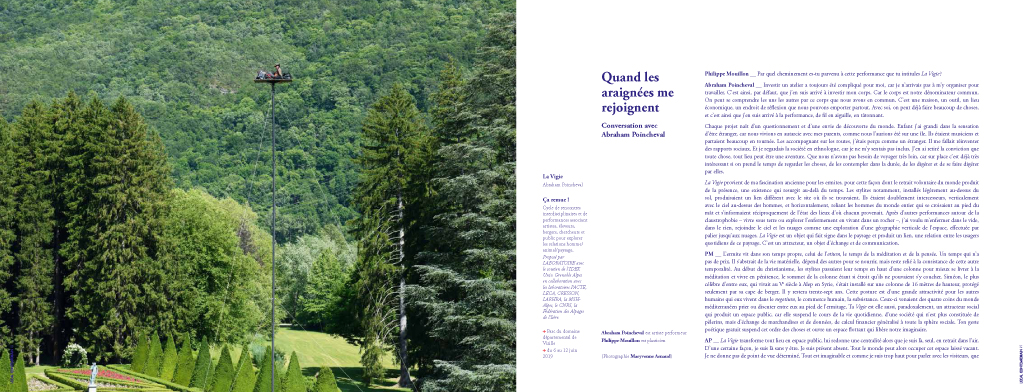
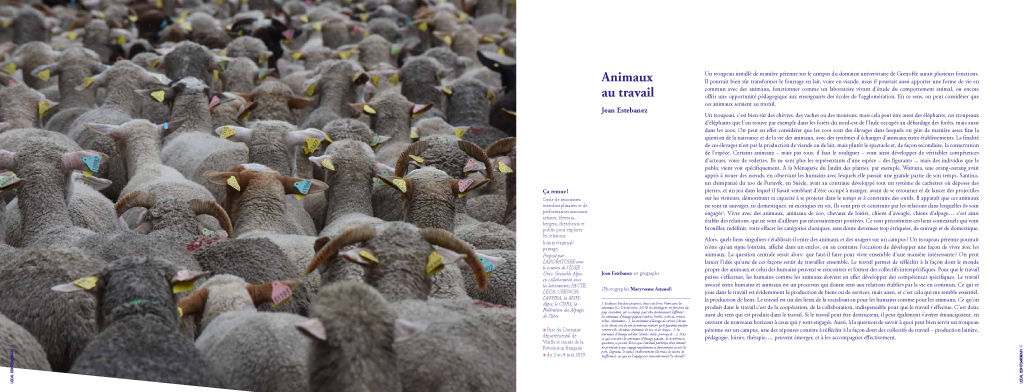
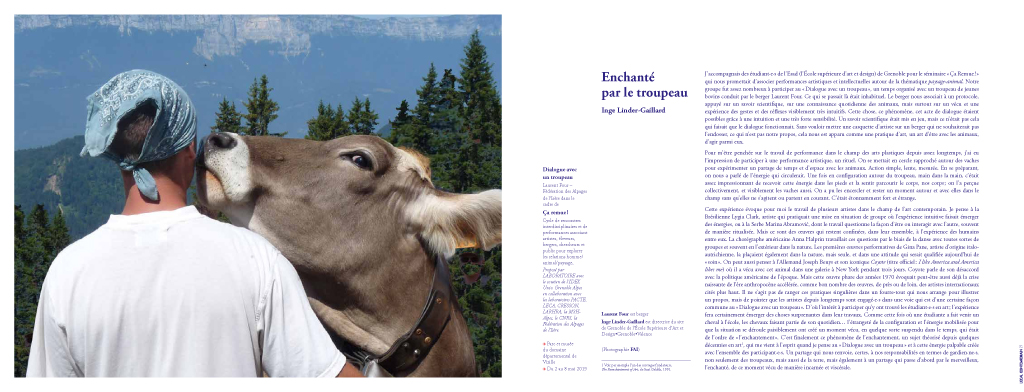
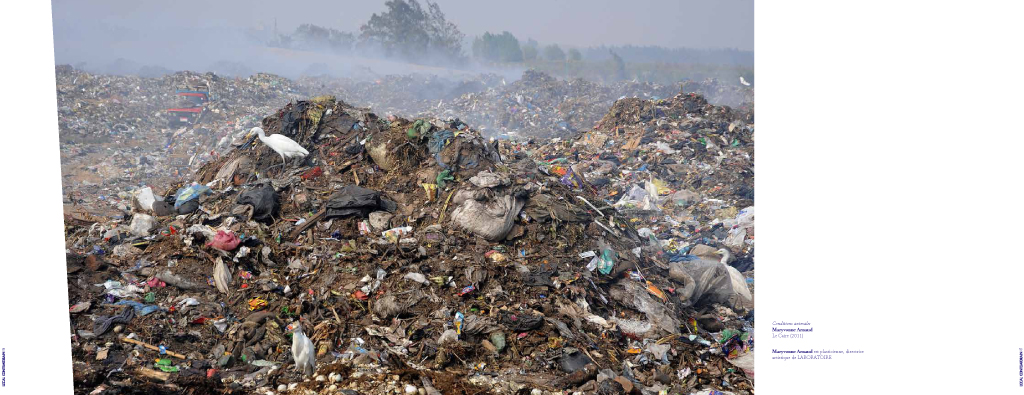
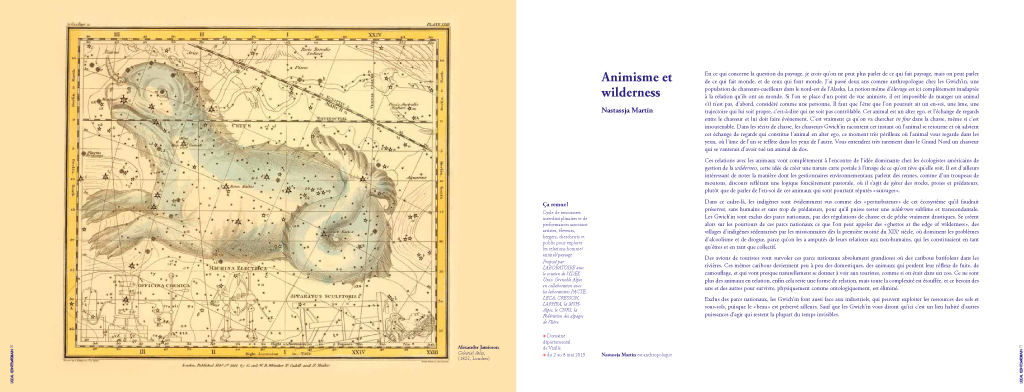
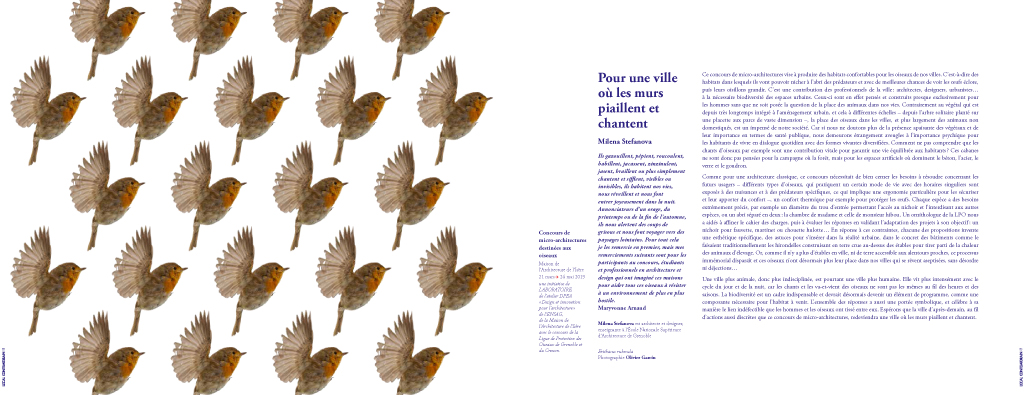
Contributed to this issue : Cyrille André, Anne-Laure Amilhat Szary, Alexandra Arènes, Maryvonne Arnaud, Jean Boucault, Daniel Bougnoux, Yoann Bourgeois, Laure Brayer, Bruno Caraguel, Alban de Chateauvieux, Antoine Choplin, Yves Citton, Laurences Després, Katia Després, Caroline Duchatelet, Jean Estebanez, Laurent Four, Jean-Charles Froment, Jordi Galí, Soheil Hajmirbaba, Catherine Hannï, Victoria Klotz, Béatrice Korc, Olivier Labussière, Guillaume Lebaudy, Inge Linder-Gaillard, Nastassjia Martin, Antoine le Menestrel, Jérôme Michalon, Philippe Mouillon, Coralie Mounet, Abraham Poincheval, Johnny Rasse, Gael Sauzeat, Milena Stefanova, Olivier de Sépibus, Henry Torgue.
Original images of : Cyrille André, Jean-Pierre Angei, Alexandra Arènes, Maryvonne Arnaud, Friedrich Böhringer, Marianne Elias, Olivier Garcin, Sonia Levy, Vita Manak, Fred Massé, Stéphanie Nelson, Olivier de Sépibus
More information on: https://local-contemporain.net/opus-11/
ORDER THE REVIEW
Sep 11, 2019 | local contemporain en
As we witness the collapse of animal populations, it seems urgent to document and symbolize the contribution of animality in the humanization of humanity.
By observation and imitation, humanity has acceded to an animal intensity of sensations which completes ours. The paintings of the Lascaux or Chauvet caves testify to the distances of this dynamic complicity. Wild or domesticated, animals have broadened the consciousness and perceptions of humanity and it would be a terrible regression to accept the sharing of the world between the industrialization of “useful” animals and a generalized ecosystem desert.
To improve our quality of life, we need to recompose human societies in order to facilitate the stay, development and movement of animality, that is to say, to carefully put together entanglements of spatialities and temporalities that do not bow to human interests and projects. It is not a question of preserving enclaves, zoos or genetic banks, but of reinventing a welcoming society for this reservoir of escaping vivacities, a necessary condition of a vivacious and promising humanity.
Because animals participate in the stability of human societies by their work, their affection, the irreducibility of their behavior. They form the humus necessary for the humanization of humanity.
Our initiative, whose form is still confidential, will involve many authors, crossing the approaches of livestock practitioners, shepherds, trainers, artists and researchers to build publically sharable symbolizations with as many people as possible.
